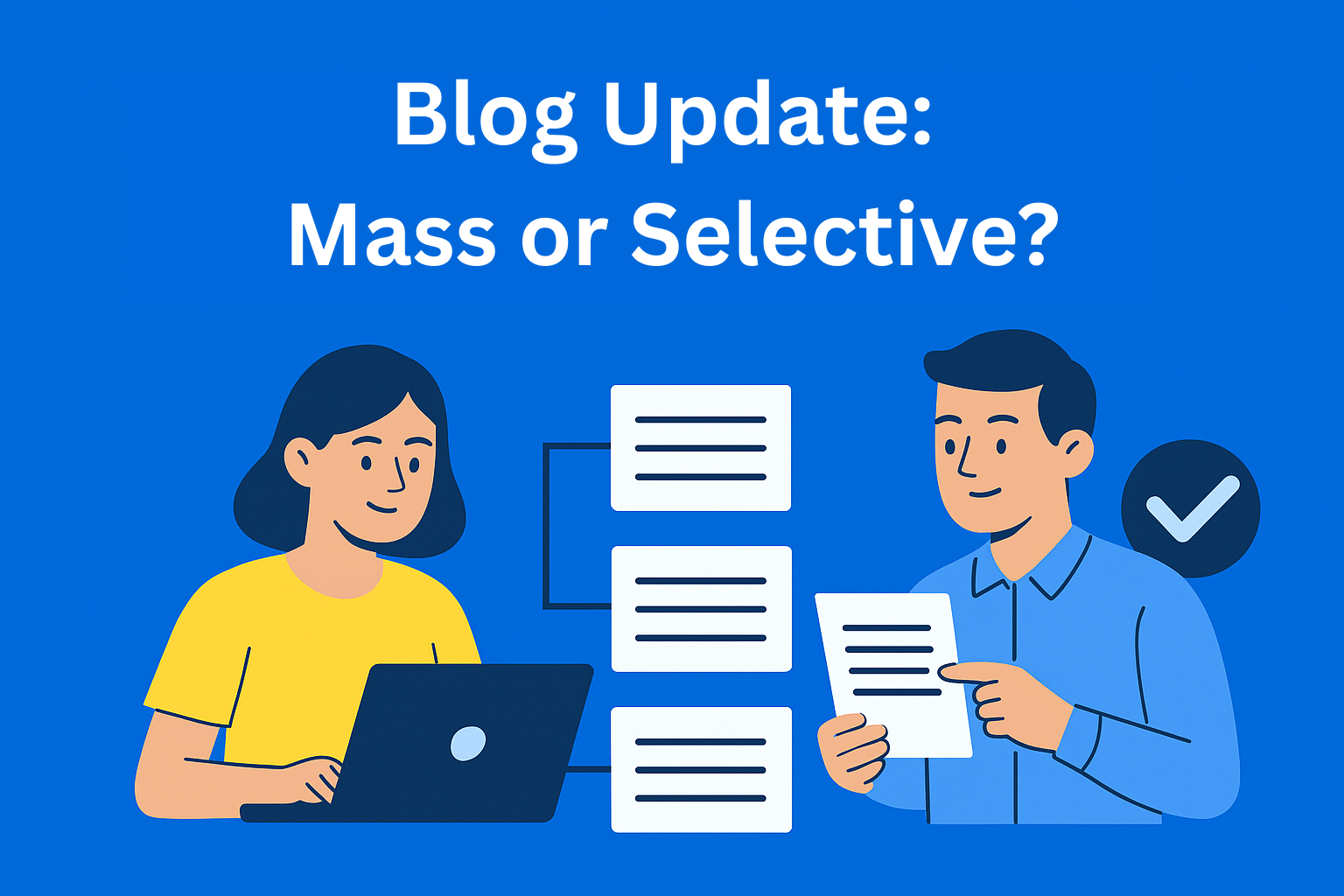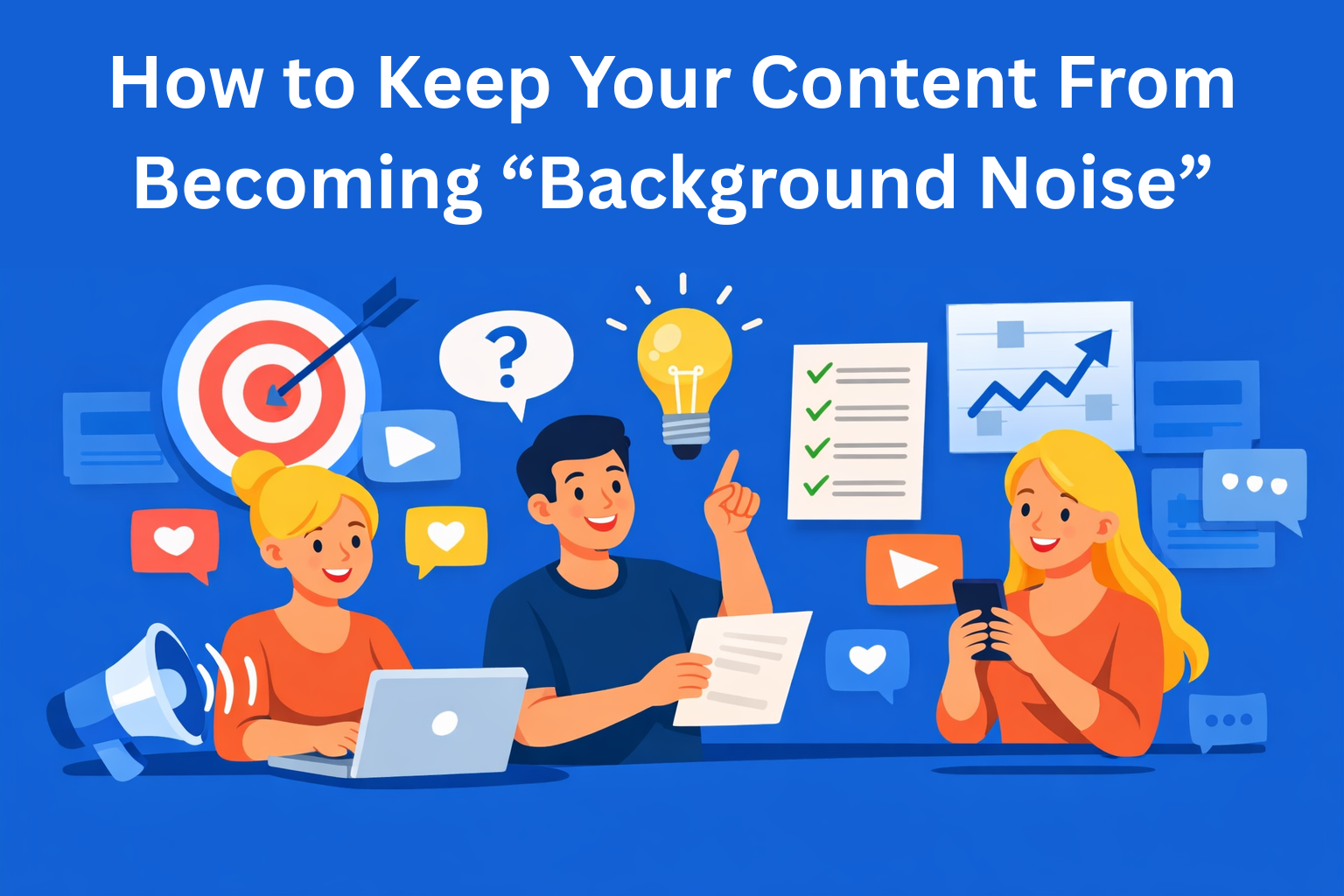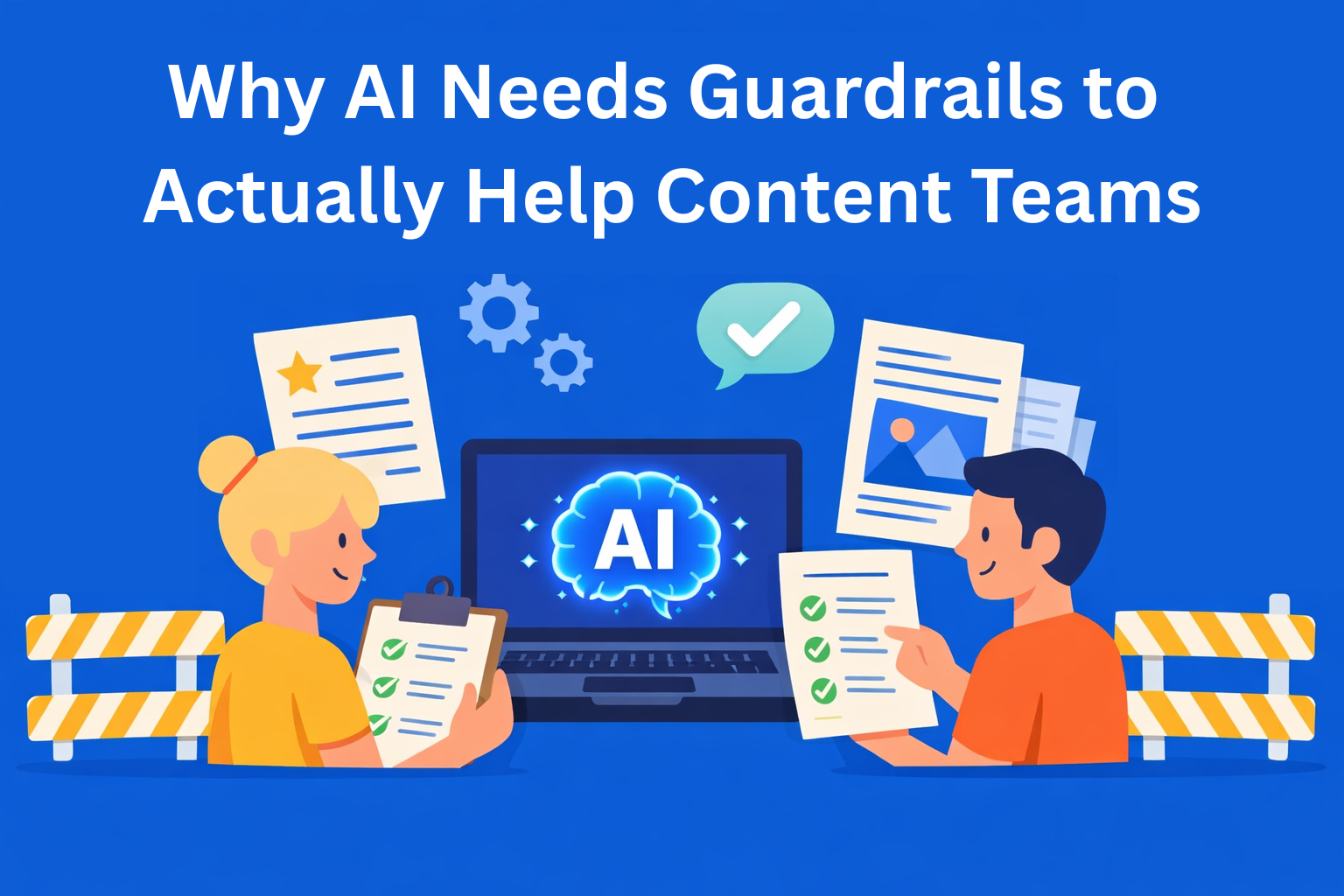Should You Update Blogs in Bulk - or Only When It Makes Sense?
Not sure if you should update all your blogs at once or only key posts? Learn when bulk blog updates boost SEO and consistency, and when targeted updates bring better results. Keep your blog fresh, visible, and reader-friendly.

If you’ve been running a blog for a while, you’ve probably asked yourself: is it better to update all posts at once, or only when it makes sense? This is a common dilemma because both strategies have pros and cons. On one hand, bulk updates feel efficient, while on the other, targeted updates can be more useful and higher in quality. Let’s simplify things and explain when each approach makes sense.
Key Takeaways
- Updating blogs boosts SEO and user trust - Outdated content can hurt rankings and drive readers away.
- Bulk updates offer speed and consistency - Ideal for large blogs when you want a quick content refresh.
- Targeted updates deliver better ROI - Focus on high-impact posts that already perform well or need urgent updates.
- Each strategy has trade-offs - Bulk saves time but risks shallow edits; targeted ensures quality but is harder to scale.
- Mix both approaches for best results - Use annual bulk cleanups + ongoing targeted refreshes throughout the year.
Why update blogs at all?
Content on the internet gets old quickly. What was correct last year may no longer be true today. If you don’t refresh your blog, you lose visitors and Google pushes your content lower in the search results. That’s why blog updates are important for three main reasons:
- SEO benefits - Google loves fresh content. When it sees that a post has been updated, it’s more likely to rank it higher.
- For readers - People want current and accurate information. If they find outdated posts, they will leave quickly.
- More conversions - Updated content means more readers, which leads to more chances for sales or leads.
Simply put, updating blogs is essential to keep your blog visible and growing online.
Pros of bulk updates
Bulk blog updating means you refresh a large number of posts within a short period - for example, over a month. This approach has several strong advantages:
- Efficiency - Once you organize and start a bulk update, the process can be faster and easier than constantly updating posts one by one.
- Consistency - If you refresh many posts at once, the whole blog looks neat and up to date. Readers won’t run into old or confusing information.
- SEO boost - When a lot of content is refreshed, Google sees your blog as active and well-maintained. This can improve rankings.
Think of it as a big spring cleaning - everything gets tidied up and refreshed at once.
Cons of bulk updates
Even though bulk updating sounds powerful, it also has downsides:
- High cost and time - If you have hundreds of posts, bulk updating can be a massive job. You’ll need a team or a lot of time to get it done.
- Shallow changes - When done quickly and in large volume, edits are often small - like changing a few words or dates. These don’t add much real value for SEO or readers.
- Unnecessary updates - Some posts simply don’t need frequent updates. Spending time on them takes focus away from more important ones.
So, bulk blog updates can help, but they depend on your resources and goals.
Pros of targeted updates
On the other hand, you can choose to update only the posts that really need it. This approach has big advantages:
- Focus on quality - Instead of refreshing everything, you invest effort in the articles that bring the best results.
- Better ROI - Updating posts that already get good traffic or are close to top positions on Google can have a much stronger effect.
- Flexibility - Targeted updates let you quickly react to changes in your industry, trends, or new information.
For example, if you have a post called “Best SEO Strategies for 2023,” it makes sense to update it for 2024 and 2025. There’s no need to touch posts that are still accurate.
Cons of targeted updates
Of course, this method also has weaknesses:
- Inconsistency - If you only refresh some posts, parts of the blog may look neglected. Visitors might notice outdated articles.
- Missed opportunities - By focusing only on “top” posts, you might miss chances to improve other, less popular articles.
- Harder to scale - This approach requires constant analysis and monitoring. It can be demanding if you manage a large blog.
So, targeted blog updating is useful but requires careful planning and ongoing effort.
How to decide which strategy is better?
Choosing between bulk updates and targeted updates depends on a few factors:
- Analyze existing posts - Look at which articles bring the most traffic, comments, or rank well on Google. Those deserve priority.
- Your goals - If you want fast SEO growth, bulk may work better. If you care about quality and focus, targeted updates are smarter.
- Resources - With a big team and plenty of time, bulk updates can be realistic. If you work alone or with a small team, targeted updates are more practical.
- Tools - SEO tools like Ahrefs, SEMrush, or Google Analytics help you identify which posts are worth updating the most.
A practical tip: divide your posts into three groups - Top performers, Solid posts, and Weak posts. Update the first group regularly and carefully, refresh the second occasionally, and either ignore or completely rewrite the third.
Conclusion
In the end, there’s no universal answer. Bulk blog updates make sense if you have a large number of outdated posts and want to lift the entire blog at once. Targeted updates are better when you want to focus on quality and put effort only where it brings the best results.
The best strategy is often a mix of both. For example, once a year you can do a “big cleanup” (a bulk update) and during the rest of the year, regularly refresh key articles. This way, you get both consistency and focus on what really works.






